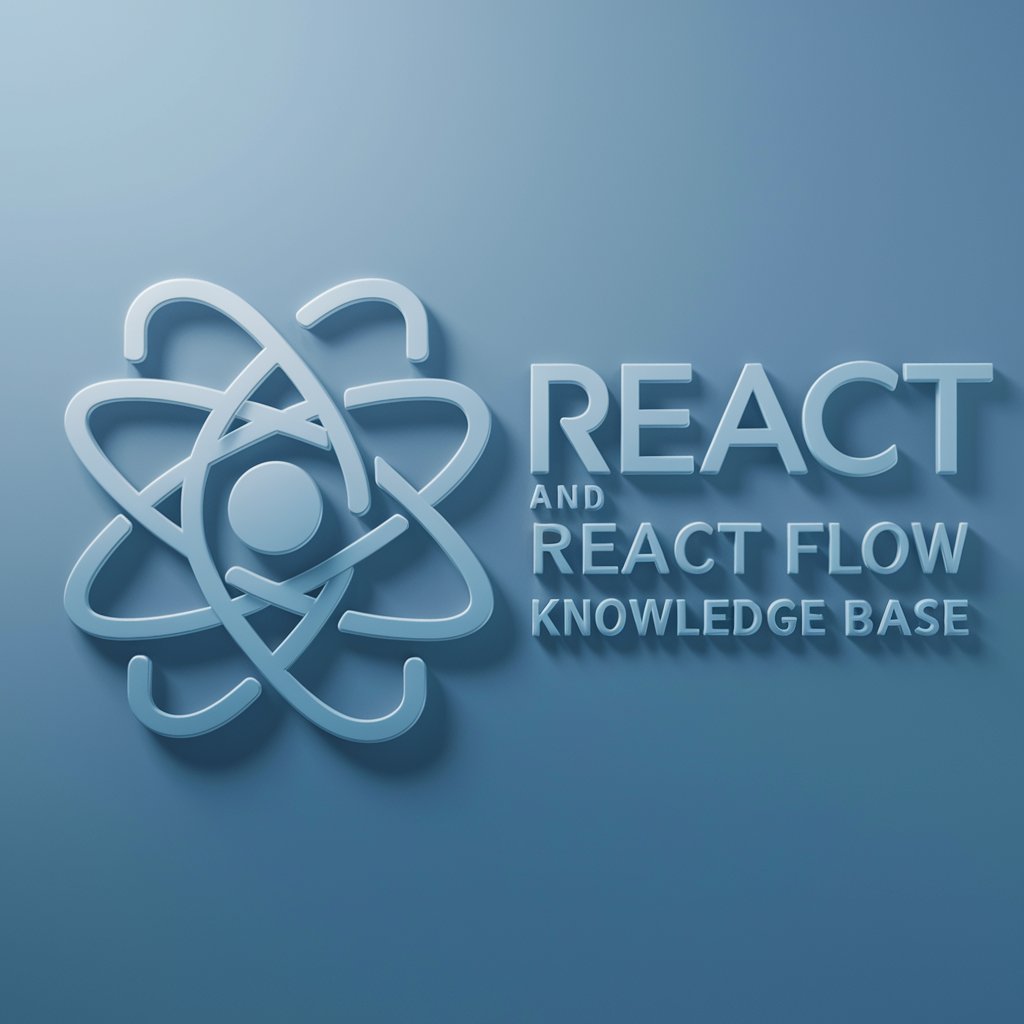React and React Flow Knowledge Base - Interactive Diagram Builder

Welcome to the React and React Flow Knowledge Base!
Craft Dynamic Workflows with AI
Explain how to implement custom nodes in React Flow.
What are the best practices for state management in React?
How can I handle edge updates dynamically in React Flow?
Provide an example of a React component with TypeScript.
Get Embed Code
Overview of React and React Flow Knowledge Base
The React and React Flow Knowledge Base is a specialized resource designed to offer comprehensive assistance and insights into developing applications with React and integrating React Flow for creating interactive, draggable node-based UIs, primarily for workflows or data processes visualization. This knowledge base serves as a guide for developers at all levels, providing best practices, troubleshooting advice, code examples, and detailed concept explanations. For instance, developers can learn how to set up a React project, create dynamic user interfaces with reusable components, manage state and side effects in their applications, or integrate React Flow to visualize and manipulate complex data structures through a graphical interface. Powered by ChatGPT-4o。

Core Features and Applications
Interactive UI Development with React
Example
Building a single-page application (SPA) that requires dynamic content updates without reloading the page, such as a dashboard for monitoring live data.
Scenario
React's component-based architecture allows developers to create encapsulated components that manage their own state, leading to efficient updates and rendering of dynamic data. The knowledge base guides through creating such SPAs, emphasizing performance optimization and state management techniques.
Node-based UI Visualization with React Flow
Example
Developing a workflow editor where users can create, edit, and visualize complex workflows by dragging and connecting different types of nodes.
Scenario
React Flow offers a flexible platform for building draggable node-based UIs. This knowledge base provides detailed examples on integrating React Flow into a project, customizing nodes, edges, and implementing features like zoom, pan, or update nodes and edges programmatically to tailor the editor to specific needs.
State Management and Data Flow
Example
Implementing global state management in a React application to share state across multiple components without prop drilling.
Scenario
The knowledge base explores state management solutions like Context API and external libraries (e.g., Redux or MobX), offering code examples and best practices for efficiently managing and accessing global state in a scalable React application.
Real-time Data Integration with SignalR
Example
Creating a chat application that updates in real-time as users send messages.
Scenario
Leveraging React's efficient update mechanisms and the real-time communication capabilities of SignalR, the knowledge base provides insights into setting up a SignalR server, establishing a connection from a React app, and handling real-time messages for immediate UI updates.
Target User Groups
Front-End Developers
Developers focused on building user interfaces will find the React and React Flow Knowledge Base invaluable for learning how to efficiently create dynamic, responsive applications using React, and for integrating complex UI elements like those provided by React Flow.
Full Stack Developers
Professionals who work on both the front-end and back-end parts of an application will benefit from the knowledge base by understanding how to seamlessly integrate React-based front-ends with various back-end services, and how to manage real-time data with tools like SignalR.
UI/UX Designers with Technical Skills
Designers who possess technical skills and wish to implement their designs more directly will find React and React Flow's component-based architecture ideal for creating highly interactive and visually appealing interfaces without deep dives into more complex front-end codebases.
Project Managers and Technical Leads
Managers and leads overseeing projects that utilize React and React Flow can utilize the knowledge base to better understand the technologies their teams are using, making it easier to plan projects, allocate resources, and manage development timelines effectively.

How to Utilize React and React Flow Knowledge Base
Start Your Journey
Begin by exploring yeschat.ai for a complimentary trial, bypassing the need for login or ChatGPT Plus subscription.
Familiarize with Basics
Review documentation on React and React Flow to understand the core concepts, components, and the library's architecture.
Experiment with Examples
Leverage the example projects and tutorials available within the knowledge base to gain hands-on experience.
Apply to Your Project
Start integrating React Flow into your projects, using the knowledge base to solve specific challenges and enhance your application's interactivity.
Join the Community
Engage with the React and React Flow community for support, to share your projects, and to stay updated on the latest features and best practices.
Try other advanced and practical GPTs
Lingo Buddy
Your AI-powered language coach

TIN machine
Empowering Informatics Insight with AI

Meme Machine
Craft Humor with AI Precision

100X SEO Content Machine
Elevate Your SEO Game with AI

Social Media Post Improver + Image Generator
Elevate Your Social Media with AI-Powered Creativity

Co-Writer's Companion
Empowering Your Creative Journey with AI

AI Corporate Attorneys
AI-powered Legal Insights for Startups

Code Explainer
Unravel your code's potential with AI

Інтернет Маркетинг Onpage
Empower Your SEO with AI

Dance School Architect (Jazz)
Empowering dance schools with AI-driven communication strategies.

ermestre school
Empower Your Study with AI

The Lessons School Forgot - AI
Unlocking Life's Unwritten Lessons

Frequently Asked Questions about React and React Flow Knowledge Base
What is React Flow?
React Flow is a highly customizable library for building interactive node-based editors, diagrams, and workflows in React applications.
How do I add custom nodes in React Flow?
You can add custom nodes by creating React components that define the node's structure and behavior, then registering these components with React Flow using the 'nodeTypes' prop.
Can I use React Flow for commercial projects?
Yes, React Flow is open-source and can be used in both personal and commercial projects, adhering to its license terms.
How does React Flow manage state?
React Flow uses a combination of internal state management and external control through props to manage the state of nodes, edges, and the overall workflow.
What are the prerequisites for using React Flow?
The primary prerequisite is a basic understanding of React. Familiarity with state management, hooks, and context API in React is also beneficial for utilizing React Flow effectively.
